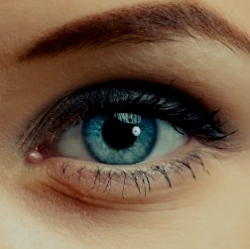
Geordi La Forge, of Star Trek: The Next Generation portrayed by the actor LeVar Burton, was born blind, but could see using a 24th-century visor that transmitted images directly into his brain. Now, real-life science looks set to outpace Star Trek technology by about 300 years.
A California-based startup called Paradromics is developing a new technique for connecting the brain to computers with the goal of transmitting data at over one gigabit per second, effectively creating a high-speed neural broadband interface.
In the near-term, the company is focused on using this “cortical modem” to restore speech functionality among people who have lost the ability to talk — for example, patients with Lou Gehrig’s disease, such as astrophysicist Stephen Hawking.
But if they are successful, the device will become a general brain-computer interface with broad implications for the field of prosthetics. High-definition cameras could be used to restore vision to the blind. Prosthetic arms could become far more deft, sending life-like sensations of touch from robotic fingertips to the brain.
“When you can connect a brain to a computer, you can connect a brain to anything that talks to a computer,” said Matt Angle, CEO of Paradromics. “Medical science can’t easily regrow your eye. But the quality of your life could be significantly enhanced by substituting for that connectivity with a brain-computer interface.”
In July, Paradromics earned a big vote of confidence by winning an $18 million grant from the Defense Advanced Research Projects Agency, or DARPA, the US Defense Department’s emerging technology research facility, to develop a human-implant version of the device. Now, the company hopes to be ready for clinical trials in humans by 2021.
To be sure, recent advances have already allowed paralyzed patients to move prosthetic limbs using neural implants, and even experience a degree of sensation. Meanwhile, California-based Second Sight has even restored some degree of lost vision in people with an eye disease called retina pigmentosa using retinal implants, although so far the images are reported to be blocky and grayscale.
A significant outstanding problem in the field has been how to send much more information to and from the brain, much more quickly — in short, how to dramatically increase bandwidth.
Current state-of-the-art technology, embodied in a system known as the Utah Array, utilizes 128 electrodes in the brain at once. The Utah Array was enough to allow Nathan Copeland, a young man who lost all feeling from his chest down after a car accident in 2004, to use a robotic arm to give then-President Barack Obama a historic fist-bump in October 2016 — and even feel the president’s hand against his own.
“That is unbelievable,” Obama said at the time. “Nathan is moving this hand with his brain.”
